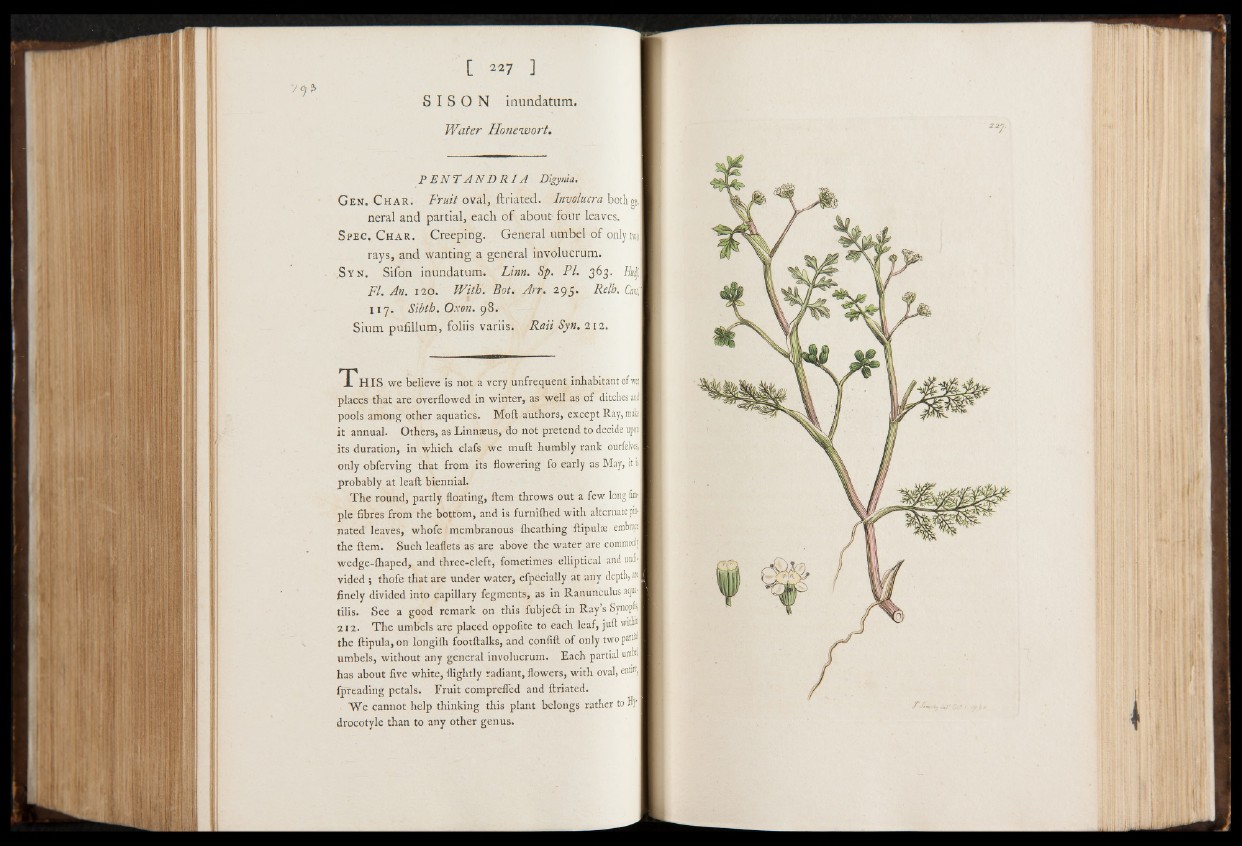
[ 2 2 7 ]
S I S O N inundatum.
Water Honewort.
P E N T A N D R I A Digynia.
G en. C har. Fruit oval, ftriated. Involucra both ge.|
neral and partial, each of about four leaves.
S pec. Char. Creeping. General umbel of only two
rays, and wanting a general involucrum.
S yn. Sifon inundatum. Linn. Sp. PI. 363. Hujj\
FI. An. 120. With. Bot. Arr. 295. Relh. Cmi\
1 17. Sibth.Oxon. 98.
Sium pufillum, foliis variis. Rail Syn. 212.
T h i s we believe is not a very unfrequent inhabitant of wet
places that are overflowed in winter, as well as of ditches and
pools among other aquatics. Moffc authors, except Ray, make
it annual. Others, as Linnaeus, do not pretend to decide upon
its duration, in which clafs we mull humbly rank ourfelves,
only obferving that from its flowering fo early as May, it is
probably at leaft biennial.
The round, partly floating, Hem throws out a few long find
pie fibres from the bottom, and is furnifhed with alternate pun
nated leaves, whofe membranous fheathing ftipulas embract
the ftem. Such leaflets as are above the water are commonlf
wedge-lhaped, and three-cleft, fometimes elliptical and undivided
; thofe that are under water, efpecially at any depth, an
finely divided into capillary fegments, as in Ranunculus aqua-
tilis. See a good remark on this fubjedt in Ray s Synopfisjl
212. The umbels are placed oppolite to each leaf, juft with#
the ftipula, on longifh footftalks, and confift of only two parti
umbels, without any general involucrum. Each partial um»
has about five white, fliglitly radiant, flowers, with oval, enttrf,
fpreading petals. Fruit comprefied and ftriated.
We cannot help thinking this plant belongs rather to Hn
drocotyle than to any other genus.